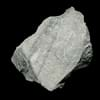Definition
Schist is a medium grade metamorphic rock with medium to large, flat, sheet like grains in a preferred orientation
Gritstone or grit is a hard, coarse-grained, siliceous sandstone
Origin
Unknown
Pennines, England
Discoverer
Unknown
J.J. Ferber
Etymology
From French schiste, Greek skhistos i.e. split
From Grit + Stone
Class
Metamorphic Rocks
Sedimentary Rocks
Sub-Class
Durable Rock, Medium Hardness Rock
Durable Rock, Hard Rock
Group
Not Applicable
Not Applicable
Other Categories
Coarse Grained Rock, Fine Grained Rock, Medium Grained Rock, Opaque Rock
Coarse Grained Rock, Opaque Rock
Texture
Foliated, Platy
Earthy
Color
Black, Blue, Brown, Dark Brown, Green, Grey, Silver
Beige, Black, Brown, Colourless, Cream, Dark Brown, Green, Grey, Light Green, Light to Dark Grey, Pink, Red, White, Yellow
Durability
Durable
Durable
Appearance
Layered and Shiny
Layered and Foliated
Interior Uses
Decorative Aggregates, Floor Tiles, Interior Decoration
Countertops, Decorative Aggregates, Homes, Interior Decoration
Exterior Uses
Garden Decoration, Paving Stone
As Building Stone, Garden Decoration, Office Buildings, Paving Stone
Other Architectural Uses
Not Yet Used
Curbing
Construction Industry
As Dimension Stone, Building houses or walls, Cement Manufacture, for Road Aggregate, Roadstone
Construction Aggregate, Roadstone
Medical Industry
Not Yet Used
Not Yet Used
Antiquity Uses
Artifacts
Artifacts, Monuments, Sculpture
Commercial Uses
Used in aquariums, Writing Slates
An Oil and Gas Reservoir, As a Feed Additive for Livestock, Gemstone, Metallurgical Flux, Production of Lime, Soil Conditioner, Source of Magnesia (MgO), Tombstones
Types
Mica Schists, Calc-Silicate Schists, Graphite Schists, Blueschists, Whiteschists, Greenschists, Hornblende Schist, Talc Schist, Chlorite Schist, Garnet Schist, Glaucophane schist.
Not Available
Features
Easily splits into thin plates, Smooth to touch
Available in Lots of Colors and Patterns, Generally rough to touch, Very fine grained rock
Archaeological Significance
Monuments
Not Yet Used
Used
Famous Monuments
Not Applicable
Data Not Available
Sculpture
Not Yet Used
Used
Famous Sculptures
Not Applicable
Data Not Available
Pictographs
Used
Not Used
Petroglyphs
Used
Not Used
Figurines
Not Yet Used
Used
Formation
Schist formed by dynamic metamorphism at high temperatures and pressures that aligns the grains of mica, hornblende and other elongated minerals into thin layers.
Gritstone is a type of sedimentary rock which was formed on the floors of wide river deltas where the grit deposits were laid down, with every tide or flood dumping another layer of sediment.
Mineral Content
Alusite, Amphibole, Biotite, Chlorite, Epidote, Feldspar, Garnet, Graphite, Hornblade, Kyanite, Micas, Muscovite or Illite, Porphyroblasts, Quartz, Sillimanite, Staurolite, Talc
Calcite, Clay Minerals, Feldspar, Micas, Quartz
Compound Content
CaO, Carbon Dioxide, MgO
Aluminium Oxide, CaO, Iron(III) Oxide, Potassium Oxide, MgO, Sodium Oxide, Silicon Dioxide
Types of Metamorphism
Not Applicable
Not Applicable
Types of Weathering
Biological Weathering, Chemical Weathering, Mechanical Weathering
Biological Weathering, Chemical Weathering, Mechanical Weathering
Types of Erosion
Chemical Erosion, Coastal Erosion, Glacier Erosion
Chemical Erosion, Coastal Erosion
Grain Size
Medium to Fine Coarse Grained
Coarse Grained
Fracture
Conchoidal
Conchoidal
Porosity
Highly Porous
Highly Porous
Compressive Strength
Not Available
Toughness
1.5
Not Available
Specific Gravity
2.5-2.9
2.250
Transparency
Opaque
Opaque
Density
2.8-2.9 g/cm3
2.2 g/cm3
Specific Heat Capacity
Not Available
Resistance
Impact Resistant, Pressure Resistant, Water Resistant
Heat Resistant, Impact Resistant, Pressure Resistant
Deposits in Eastern Continents
Asia
Afghanistan, Bangladesh, Bhutan, China, India, Japan, Kazakhstan, Malaysia, Pakistan, Russia, Thailand, Turkey, Vietnam
China, India, Kazakhstan, Mongolia, Russia, Uzbekistan
Africa
Egypt, Ethiopia, Morocco, Nigeria, South Africa
Namibia, Nigeria, South Africa
Europe
Austria, England, France, Georgia, Germany, Italy, Liechtenstein, Monaco, Norway, Slovenia, Spain, Sweden, Switzerland
Austria, Denmark, Germany, Great Britain, Netherlands, Poland, Sweden, Switzerland, United Kingdom
Others
Not Yet Found
Greenland
Deposits in Western Continents
North America
Canada, Costa Rica, Cuba, Mexico, Panama, USA
Canada, USA
South America
Brazil, Colombia, Guyana
Brazil
Deposits in Oceania Continent
Australia
New South Wales, New Zealand, Queensland
New South Wales, New Zealand, Western Australia
All about Schist and Gritstone Properties
Know all about Schist and Gritstone properties here. All properties of rocks are important as they define the type of rock and its application. Schist belongs to Metamorphic Rocks while Gritstone belongs to Sedimentary Rocks.Texture of Schist is Foliated, Platy whereas that of Gritstone is Earthy. Schist appears Layered and Shiny and Gritstone appears Layered and Foliated. The luster of Schist is shiny while that of Gritstone is dull. Schist is available in black, blue, brown, dark brown, green, grey, silver colors whereas Gritstone is available in beige, black, brown, colourless, cream, dark brown, green, grey, light green, light to dark grey, pink, red, white, yellow colors. The commercial uses of Schist are used in aquariums, writing slates and that of Gritstone are an oil and gas reservoir, as a feed additive for livestock, gemstone, metallurgical flux, production of lime, soil conditioner, source of magnesia (mgo), tombstones.










